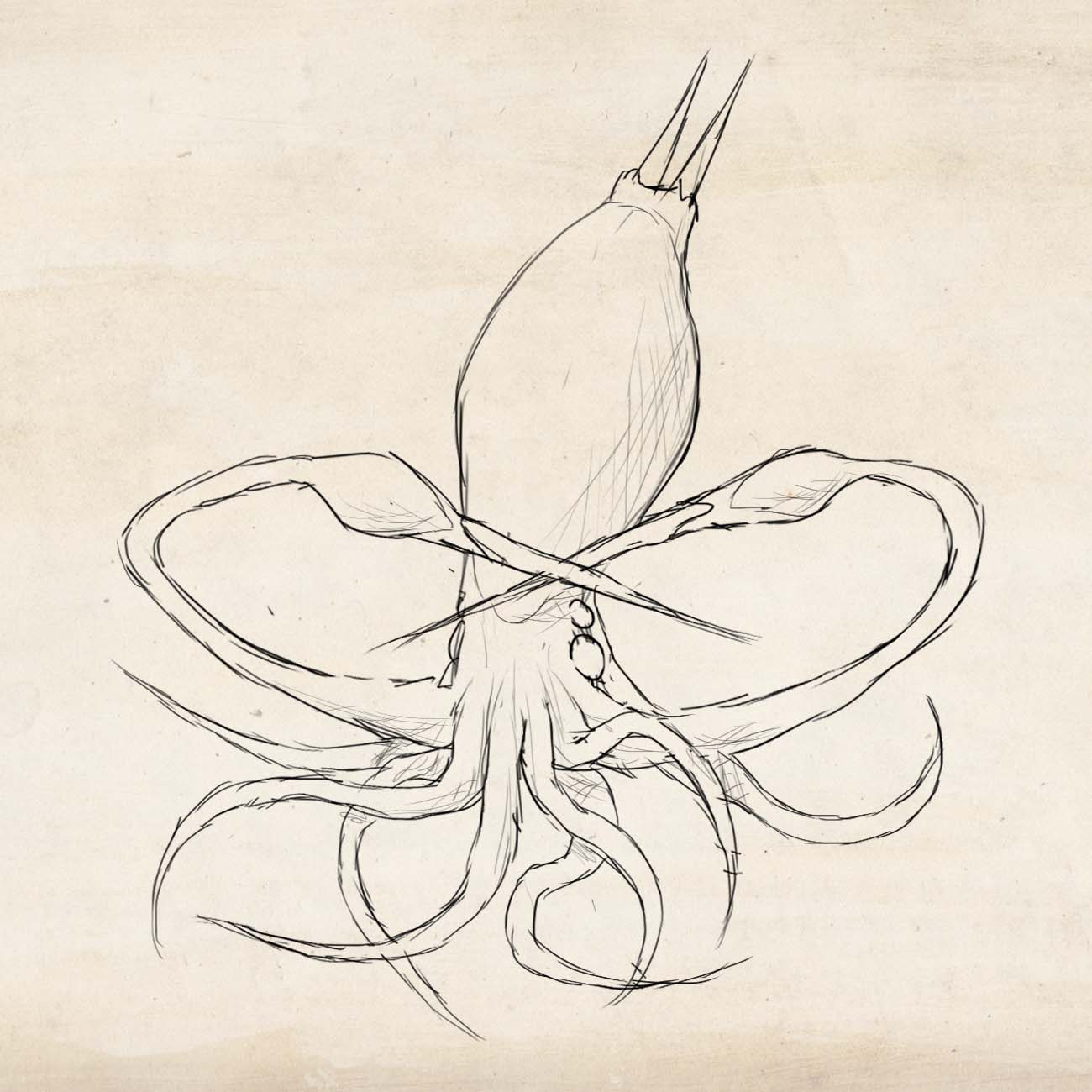Polearm Squid
The Polearm Squid is a large ambush predator living in every known region of the Nightlight Zone's forests. They display very high intelligence, and are able to shoot clouds of ink to defend themselves, on top of their built-in polearms. This ink is thought to have a certain affect on other creatures' brains, as it causes them to go into a confused daze for a few seconds, just enough time for the squid to kill it with their sharp arms. This squid's one detriment is that it has little camouflage, causing it to stick out like a sore thumb in its habitat.
Basic Information
Anatomy
The Polearm Squid's body is large and round, taking up around the same length as its arms. The squid has ten arms, with two having sharp bony outgrowths sticking out of the tips. There are also two smaller outgrowths in the back of the creature's head, mainly use as an extra set of defense when swimming.
Genetics and Reproduction
When two Polearm Squid meet each other, they may engage in a short playful brawl in order to decide whether or not to mate. If each display a high level of fitness in the other's eye, they'll start the next generation, laying their eggs in a safe area hidden away from the world. Most families prefer to lay them inside the giant roots that often grow out of the ground, with the mother being the only parent left to guard the eggs, only taking a break to hunt and feed herself.
Growth Rate & Stages
Baby Polearm Squid will remain under the protection of their mother for their entire youths, staying put in the nest while she goes off to hunt. The siblings will play fight with each other from time to time, attempting to learn how to use their polearms and ink for defense, as well as exploring the area around their nesting site. The mother will also have a role in teaching them how to defend themselves, sometimes bringing live creatures back for them to practice on, as well as making sure they don't stray too far from the nest. As juveniles, the young may also go on practice hunts with the mother's supervision, until she deems them ready to live off on their own. From there they'll lead mostly solitary lifestyles.
Ecology and Habitats
These squid can only be found in the Forests, where they devote their time to traveling the wilderness in search of good hunting grounds, as well as finding mates. They only ever touch ground to care for their young, sometimes building protective walls around their nests with rocks they find nearby.
Dietary Needs and Habits
These squid will attempt to conceal themselves in foliage as much as possible, staring out into the open for prey to unknowingly pass by them, their main food sources being Probefish and Lathradons. Once the prey is in range, the squid will emerge from its hiding place, spraying its ink to daze it, then impale it with their built-in polearms. Sometimes they use both at once for dramatic effect.
Additional Information
Perception and Sensory Capabilities
The Polearm Squid's four eyes help it detect prey from virtually anywhere, along with its keen senses of hearing and smell to go along with it.
Symbiotic and Parasitic organisms
Certain smaller species such as Spikefish and Kelp Gliders have been observed traveling close to these squid, thought to be for protection, considering these creatures are not part of the Polearm Squid's diet. These smaller species rely on the Polearm Squid to scare off any predators that may threaten them.
Scientific Name
Dorioceras aichmiro
Lifespan
Unknown
Average Weight
310 lbs.
Average Length
20 ft.
Average Physique
Slim
Body Tint, Colouring and Marking
Red-orange skin, orange polearms, glowing orange eyes
Geographic Distribution
Very high
Remove these ads. Join the Worldbuilders Guild










Comments